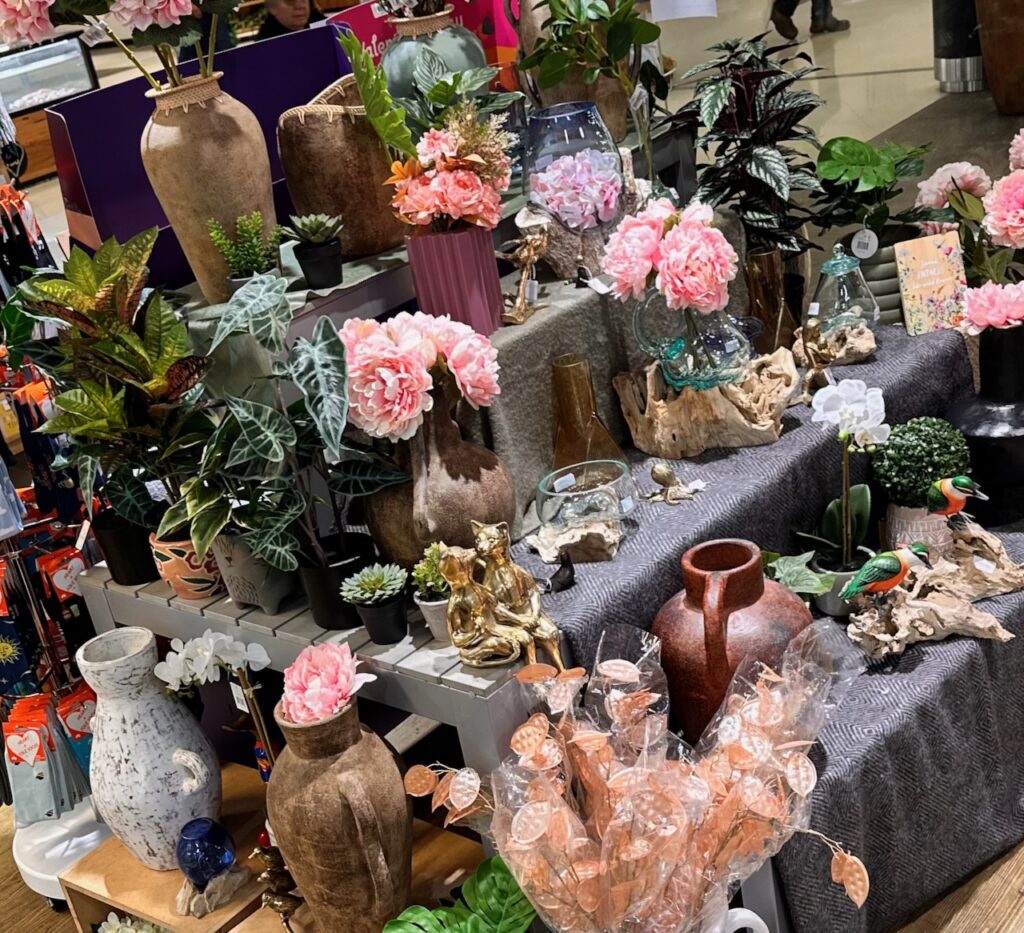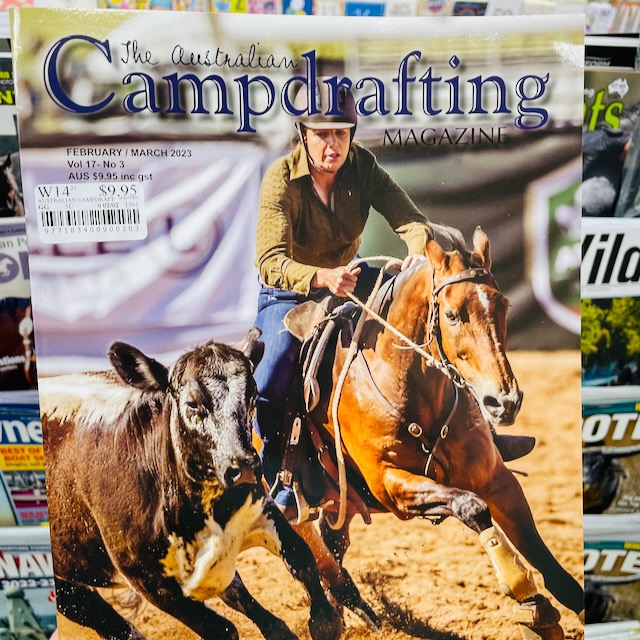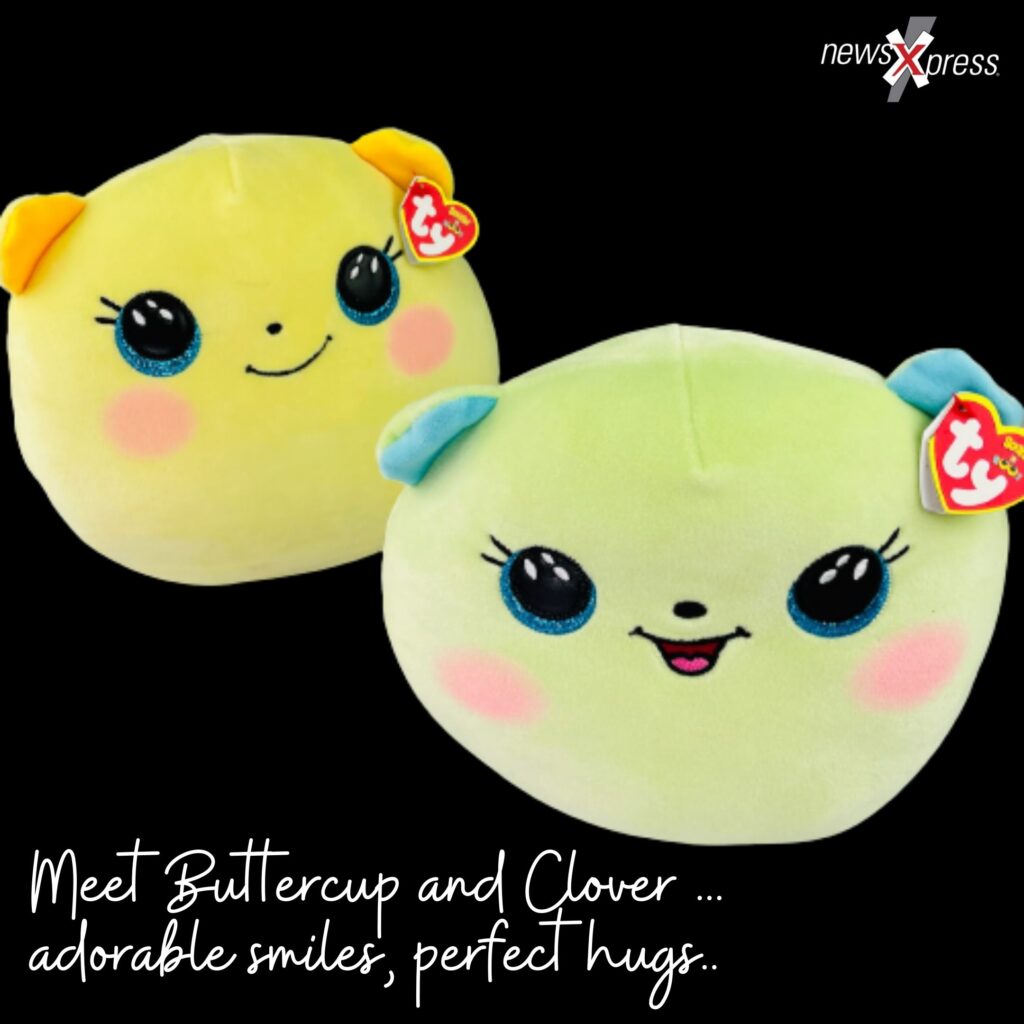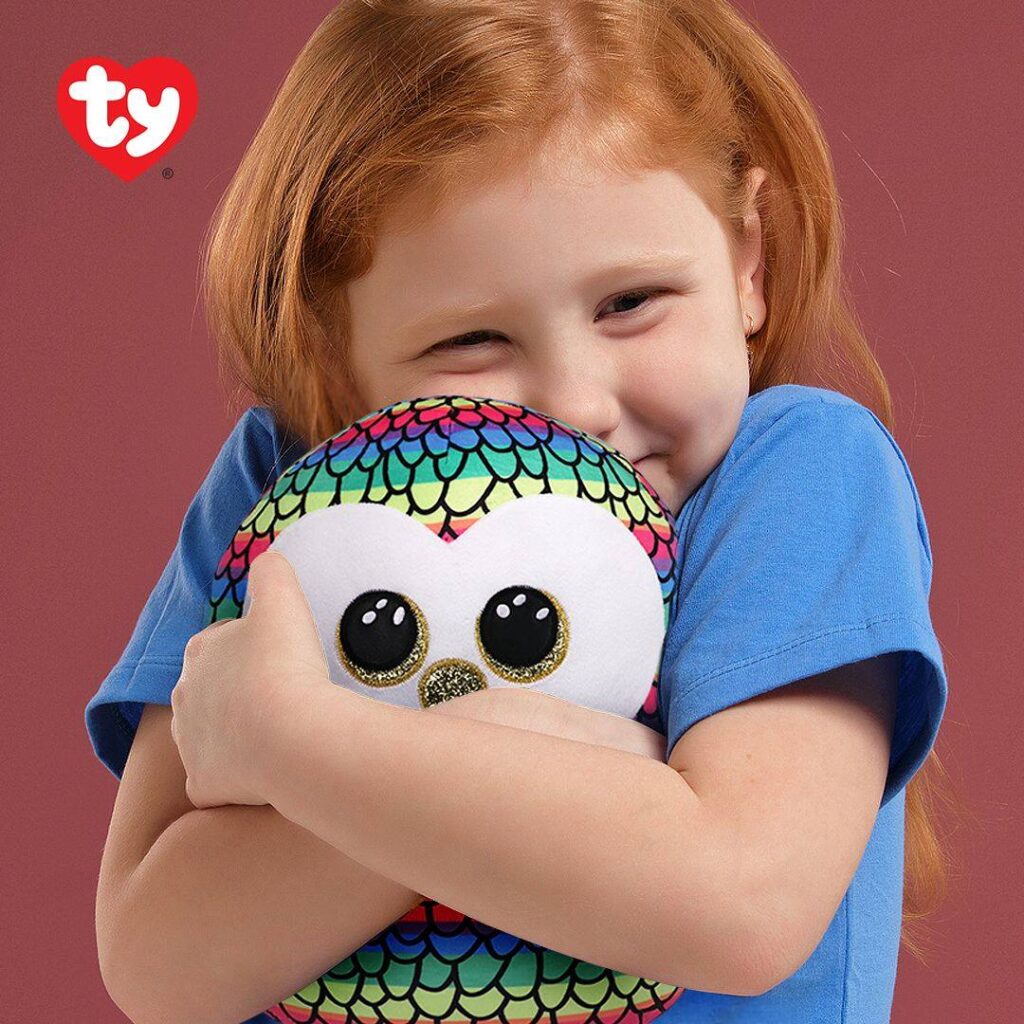Australian Cars The Collection TV commercial
Here is a link to the TV commercial, which you can download and use to promote this new title launch: https://www.gordongotch.com.au/ggweb/Australian-Cars-The-Collection
Here is a link to the TV commercial, which you can download and use to promote this new title launch: https://www.gordongotch.com.au/ggweb/Australian-Cars-The-Collection
The front window display of your shop is your headline. It announces you, defines you to those passing by for the first time and can catch the attention of regular and possibly store-blind shoppers.
Your front window display is your opening statement, your this is what to expect from us not.
The front window is the best place to play against assumptions about your business and the newsagency shingle more broadly.
The front window display needs to change regularly. How regularly will depend on your local traffic cycle.
I love this front window display from the awesome team at our Westfield Southland store.

This front window pitch introduces new products, excellent margin products. It’s successfully attracted new shoppers, which we love.
I think the best way to approach a front window as it being one of the most important marketing activities in retail. And, as local independent retailers, we can pitch a front window that feels warm – unlike the soulless windows we see in franchise and corporate chain stores.
Each newsagency in Australia is locally owned and run. Right there, that is the key reason not all newsagents are the same, and it is a good reason. These are locally owned and run businesses, serving locals, reflecting local needs.
Back in the day you could count on every newsagency to sell stationery, magazines, newspapers, greeting cards, lottery tickets and cigarettes.
Today, there are some newsagents who do not sell magazines, some who do not sell newspapers, some who do not sell stationery, plenty who do not sell lottery products and plenty more ho do not sell cigarettes.
Some newsagents specialise in unique area such as secondhand goods, clothing, haberdashery, firearms, farm supplies, plants and plenty more.
There are no rules about what a newsagency business must sell to be regarded as a newsagency.
Decades ago, we’d be referred to as authorised as that’s what we were, an authorised newsagency. It has some weight to it, and plenty of obligation to the masters of the day, the newspaper publishers. Those days are gone. There are no authorised newsagencies.
Aussie newsagencies are not the same because times have changed. What sells has changed. Good retailers evolve with the changes, ideally ahead of the changes.
Even in the different newsagency banner groups there are considerable differences among businesses, which is odd for a couple that are more franchise like but not run the way plenty of franchises are run – in a cookie cutter way. You only have to walk in the shops to see the differences.
None of this is a bad thing because local retail is, after all, in service of locals and what the folks of Cairns will want is different to what the folks of Devonport will want. This is what local retail is about.
All Aussie newsagents aren’t the same because they are local.
My point is that each newsagency in Australia is different and should be considered that way. There is no common set of products and services we sell, no expectation you should have regarding any newsagency business in Australia, no expectation that products, prices and / or service would be the same in each. The difference between newsagency businesses is something to celebrate, just as every locally owned and run retail business is something to celebrate in the local community.
I know of newsagents today using AI (artificial intelligence) tools in their businesses to save time and provide a competitive advantage. Here are some AI use examples I have seen:
Writing product descriptions and longer form product descriptions is a good use of the ChatGPT AI integration my newsagency software company delivered to newsagents early this year. You put in a few keywords and in seconds you have description text ready for your review or edit.
Managing customer chat for your shop’s website can provide a response to simple to modest queries without labour cost.
Writing an email to a supplier requesting a refund for product that is not performing. By providing ChatGPT some contextual prompts, the AI platform wrote an email making a sound case for refund consideration.
Writing a letter to the landlord seeking reduction in the rent. After providing ChatGPT some business details, the AI platform wrote a good two page letter with economic data that checked out.
Writing disposable social media content. If you have a product image and some keywords, AI could generate cohesive sentences for you in seconds.
Giving employees broader experiences and thereby making working in the newsagency more interesting. Let them show you what could be possible.
Finding new product category opportunities.
In some of these examples, the key to successful use is rooted in the prompts you feed to AI. It can take considerable experience to land results that are genuinely useful to you. Equally, you can botch this, get bad output and think AI is useless, which would be a mistake, of course.
There are other uses of AI already in systems and other tech in use in businesses, including in newsagency businesses, just under the surface. I could list some other uses of AI but I won’t for commercial reasons.
While it is appropriate to be cautious in using AI, generating content and other results for review is itself a time saver for any newsagency business.
I think every retail business should be using AI in at least some parts of their businesses today. It makes sense. Even as a starting point. Take the rent reduction email request. While anyone could write the email, that AI generated in seconds was well structured and provided a basis for quick review, tweaking and then sending – all in a minute or so, saying maybe half an hour.
I think what we will soon see is more cost-effective shop floor bots that can answer questions, price products and provide customer service beyond what we expect today. We’ll also hear them answer phones in shops too. Yes, all of the things will come in newsagency businesses.
Where more benefits will flow is in areas like buying where, too often, emotion gets in the way of good business decisions.
While there will be some in local small business retail who resist a greater reach of AI, soon enough it will be like the fax machine was a year or so after launch, an everyday part of business.
While, for sure, there is plenty to worry about with AI, especially in military and policing settings, there are so many other uses, like in newsagency businesses, where we can benefit and improve what we offer our customers.
Special magazine retailers, those with 800+ different magazine titles on their shelves, thrive on diversity in titles as it is this that brings in folks interested in the special interest titles as well as lovers of the magazine form.
The Australian Campdrafting Magazine is a good example of specialty. I get that it’s very niche, and not for most newsagents. I think it’s a good magazine to promote outside the store, as ist speaks to diversity in range and, I think is enough to attract people looking for unique magazines.

So that’s what we did in one of my shops. we used this magazine for an out of store promotion to pitch diversity in range. We try and do this type of promotion weekly on social media, and we put a small amount on the table to support the promotion.
I have shared this to reinforce that any newsagent can achieve this percentage growth, and to show that every day, I walk the walk in my own newsagency businesses.
There are plenty who tell newsagents what they should do and how they should do it, including me. Only a few of those are practitioners themselves.
It feels to me like the folks at The Lottery Corporation are interested in new outlets in the convenience and tobacco retail niches to the detriment of the historically strong focus on newsagency businesses.
Okay, I don’t have evidence to support this. It’s why I say it feels like.
Any move referencing tobacco retail would be odd as it challenges the values of TLC. I mean, seriously, any support of tobacco businesses would be problematic for any partner. I mean, lung cancer …
It’s been on my mind recently because of colleague newsagents who have had to deal with new competitors, tobacco outlets, approved by TLC for a lotteries franchise.
I mention it here to put the topic on the record, to see if anyone comments.
I may be wrong. There may be nothing to see here. But, on the other hand, there may be plenty to see here. It could be a trend.
It wouldn’t surprise me given what we see in some overseas markets.
Squish-A-Boos, Squishmallows and similar squishy huggable products are selling well early in 2022, on the back of excellent sales in 2021. These products, and other sensory products, are purchased for all ages from kids through to grandparents – because giving them is like giving a hug.
They sell equally well in-store and online. It’s online where we can tap into interesting data to understand more. For example, half of online purchases are sent to an address different to the purchaser address. That tie-in with the sending a hug thought. Also online, 75% of purchases are 3, often more, while in-store, the majority of purchases are single units.
We have had good success promoting the range on social media.

Being above 50% GP is also appealing.
Success with these squishy products comes down to a few factors: range, strategic in-store placement and understanding the shopper.
It’s not enough to have a small selection. For these squishy products, range does sell – range in terms of characters and sizes.
Strategic placement is all about ensuring that every shopper passing or entering the shop can see them.
Understanding the shopper is all about knowing that it’s not only kids who are drawn to these sensory products. We have sold many destined for parents and grandparents – because giving one of these is like giving a hug. That’s the best sales pitch.
Some people make a mistake and look at these as toys. They are not toys. Okay, to some they may be. But, most sales are not as toys. Most are for a more emotional purpose, a more endearing purpose, and this is what retailers having success most likely tap into.
While you can have terrific success with these squishy products by stocking them. Nurturing and supporting them will leverage far greater success.
This sensory opportunity first became big in 2018. It has been successful ever since. I do think Covid has played a role in supporting the longevity.
I know of a regional newsagency in Australia with a catchment area population of under 5,000 doing $15,000 a year in this space. I mention this to put a number on what success looks like. Their stock investment is under $1,000. That’s a turn in excess of 15. in terms of space and capital, it’s among the most rewarding product niche in the business.


This is one of the weirdest videos I have seen. It was uploaded to YouTube a few days ago. In it, the presenter compares packs of AFL collector cards purchased from Coles compared with the same products purchased from a local newsagency. While the video is weird, it is weirder that it has had 995 views already.
Don’t judge me for finding this. I was looking for something else and found this. Seriously odd.
An interesting story at the Shropshire Star on a community buying a ,coal newsagency to convert it into a hub:
Former newsagents brought back to life as community hub
By Charlotte BentleyBishop’s CastlePublished: Mar 20, 2021Last Updated: Mar 21, 2021A south Shropshire community has announced plans to transform a former newsagents in the town into a hub and bring it back to life.
The Bishop’s Castle and District Community Land Trust has bought 70 Church Street, a former newsagents, for community ownership.
Hope Robson, resident and activist, said she can’t wait to get started on the project bringing the old Stars Newsagents back to life in the centre of Bishop’s Castle.
Thursday marked the launch of the campaign, and the day the front door was unlocked for the first time since August 2015.
More overseas trade shows have been delayed as retailers and wholesalers deal with Covid challenges.
The New York Toy Fair, a key buying event for Australian toy wholesalers, has been moved two months. Some expect it to be delayed further. Some suppliers are not waiting and have scheduled their own online events at the timing of the original Fair – Mid February.
While trade show delays here in Australia impact retailers and suppliers, it is the overseas fairs that impact suppliers.
This time of the year, January through early March, it is not unusual for buyers from Australian businesses to be overseas for almost the whole time bouncing between trade shows. that is not happening this year. This will play out in terms of product ranges we see available.
the product catgegories most challenges by this disruption are gifts, homewares, toys and games.
I've got a little favour to ask you all.
This week, when you're fitting in some last minute shopping, or stocking up for the big day – think of the person across the counter.
Think of the the checkout staff packing your bags, or the retail assistant helping pick a present.
— Dan Andrews (@DanielAndrewsMP) December 23, 2020
January will not be normal.
January has traditionally played out in different ways for small business retailers in different parts of Australia.
In some parts of the country, retail is usually so slow that many shops close for several weeks. In other parts of the country, towns swell with tourists and trading hours are extended.
What has been consistent about January for small business retail in Australia is that it has been prdictable.
I don’t think January 2021 will play out in a predictable way.
People are not travelling overseas. But, they are motivated to travel, to shake off 2020 and to start 2021 with new memories, from more local travel.
With plenty of annual leave not taken in 2020, I suspect more will start 2021 taking leave.
Businesses will start 2021 earlier than usual, working on new approaches to business, including on-going working from home for some, which will open opportunities locally.
Places that have not seen many tourists over the years are likely to see some. Tourist destinations will fill early, encouraging people to look elsewhere.
In short, the usual January slowdown we have been used to in small business retail in most parts of Australia is less likely in 2021, in my view.
Locals staying local will be looking to embrace optimism about 2021. Local retailers can lean into this, nurture optimism and offer opportunities for engagement with the local community. In our shops we can make January fun and feed into the desire for a good start to the year.
Be ready. Make sure the shop is fresh, that you have new product and that ou provide an entertaining retail experience. Think about your hours. Find ways to leverage the changed situation.
I mention this today so you can plan. January will be different. How it plays for you depends on you.
I see challenges for newsagents in the decision by Ovato to use News Corp to ship magazines as News Corp. does not have an ideal track record for on time and retailer retailer friendly delivery.
Also, there are reports elsewhere of a move to contract drivers. Some see this as a move away from respecting the award for fair pay and moving to a business to business model that results in under aware payment for the same service.
I get that Ovato has to cut costs. I suspect there will be consequences for newsagents.
News Corp in Queensland has pitched a prepay and save promotion to newsagents using the bloated Blueshyft platform.
I say it is cumbersome because of the approach being taken by News / Blueshyft and the operational implications, especially for those with their POS systems integrated with accounting software.
As usual, News did not tell key stakeholders, the software companies, about the promotion. This matters as it is the software companies that are carrying the load of calls from newsagents trying to work out how to operationally run the promotion.
Here are some details from the launch announcement from news:
On Monday we launch our new initiative – Prepay & Save. This Newsagent-exclusive promotion is designed to support you and increase sales by rewarding your loyal buyers, driving higher purchase frequency by offering an always-on discount equivalent to 20% discount.
What is the offer?
Customers can top up a Prepay & Save Account with either $20 or $50, and get:
1st Paper Free
Every 5th Paper Free (any paper, day of the week)
No lock in contract
This offer is only available to Blueshyft agents. You will receive many benefits by participating in this offer, including:
– Offer Exclusivity – Prepay & Save is only redeemable at Blueshyft newsagencies so customers will need to return to a Blueshyft newsagent to receive the ongoing discount.
– New Sign Ups: earn $5 commission for every new customer sign up. Paid by Blueshyft monthly on the 21st of each month (for the sign ups achieved in the month prior).
– Newspaper Redemptions: standard commission will be paid for every paper redeemed through the Prepay & Save Program (including the free copies). Reimbursements will be paid by Blueshyft
fortnightly for the prior two weeks of newspaper sales taken through the Prepay & Save platform.
This offer costs the newsagent absolutely nothing! You will be fully reimbursed for all paper transactions through Blueshyft so there is absolutely no reason not to participate.
We also have a special launch incentive exclusive to Queensland which could see you earn $30 dollars for signing up 3 customers and a further $50 if you sign another 2 to make it 5 in total. Full details on the attached flyer.
Newsagents who are part of the nexus program from Pacific Magazines will have been advised of the Bill Busters cash prize promotion that starts next week.
Based on past years experience, this promotion is an easy win for attracting shoppers and driving purchases.
My advice is to engage early and regularly with the opportunity with in-store and social media engagement with multiple touchpoint. We know from research that three points of promotion is the minimum required to get value from this promotion: front of store, magazine department and counter.
I appreciate plenty here will say why promote products from which you only make 25%. While I think that is a fair argument to make to any magazine publisher, it should not be a barrier to engagement with the certain win of this promotion.
Shoptalk brings together more than 15,000 retail professionals for four days to talk all things retail and to contemplate the future.
This year, Shoptalk has been extraordinary, insightful, challenging and encouraging.
On the last day, the team I was here with shot a brief video outlining key takeaways. However, this shot video does not do justice to the valuable content and learnings. These will be obvious over the rest of this year and into 2020.
Here is the video we shot:
Today, shoppers have multiple ways they can complain about a product, a service or an experience with a retail business. Whereas in the past it could have been by phone or in person, today, they can call, email, Facebook message you, Twitter DM you, review you on Google, Facebook, TripAdvisor, Yelp and more … they can complain in places away from you too in social media groups – the new form of word of mouth. This lis is not complete.
My point is that complaining is easier. While this facilitates fake complaints from people with a legitimate or illegitimate grudge (see some comments here) or .com a competitor.
Since complaining is easier, the responding is harder. How, when and where we respond is critical.
In the response is not what a complainer wants but is truthful, they may avert it or say you are a bully or say you are lying or have some other attack. So, you need to be aware of this as you prepare your response.
To be on top of this challenge you need a consistent process, a structured process … to ensure you respond to every complaint. Your responses need to be truthful. They need to be human, in the voice that fits with your business and the customers you aspire to reach. I say this because your response is not only to the person complaining but all in your community.
Today, wha this means, is being on the platforms used by you customers and being responsive on these. This is a tough challenge for small business retail. There are outsource businesses that will do this for you. However, in our channel I don’t see it as an opportunity.
But no matter how good your processes, how accessible you are and how truthful your position, sometimes, you need to give a complainer what they want even if they are wrong because the cost of not doing that is greater than the cost of being right. I say this because today’s megaphone world of social media is easily leveraged by those few out there who know they can get stuff and benefits by being critical at volume. And this is the biggest challenge in this area of customer complaints today.
In the 2015 financial year, online revenue accounted for 12.5% of Tabcorp (Tatts – The Lott) lottery revenue. In 2016 the percentage was 13.5%. In 2017 it was 14.5%.
In the financial year to June 30, 2018, according to the annual report just released by Tabcorp. This, on page 12:
Lotteries has over 2.9 million registered digital customers and digital accounted for 17.7% of all lottery sales.
That is a whopping 22% increase on the previous year. What for three years was a steady increase in the percentage of lottery revenue coming from online, the 2017/18 year saw a spike, a significant spike.
While I have no evidence, I do wonder if this is the Lottoland effect. Lottoland has spent a fortune on advertising promoting online purchase of lottery products. The bulk of that spend has been in the 2017/18 financial year. I suspect The Lott has benefited from that Lottoland advertising.
Newsagents need to factor in continues migration of over the counter lottery purchases to online. If I was a Tabcorp shareholder I would want to see this. If I was a regular lottery punter, online is what I would use as it is time efficient, accurate and easier. It fits with the migration of other in-person transactions to my phone and / or computer.
The evidence is the evidence. There is no refuting it. The challenges are: to be informed and to factor this evidence into your business planning.
For what its worth, I think the most critical point here is to be actively working on new traffic generation. This is done through offering products that will appeal outside your usual pool of customers, products people will travel to purchase, products people will purchase again and again and products that you actively and primarily promote outside your business.
Are reality is newsagents should have been working on new traffic opportunities for years as these things the time to develop and mature. There are missteps to learn from and small successes to nurture.
While I understand some will be angry at the growth on online reported for The Lott, that achieves nothing. It is a business putting its shareholders first. tats is wha you have to doo. that is why you have to be working on opportunities outside what has been usual for you – to chase a better than usual result.
I have revised my previous Easter marketing ideas and offer them here for retailers looking to take a different, non-traditional) approach to marketing this season of increasing value:
Easter is considered by many to be a small season. I see it as full of opportunity and primed for fun in the newsagency.
Last week, just before Easter, we moved the magazine department from the body of the business to the back wall. Not as punishment, not out of frustration. No, we moved them as a result of careful thought and analysis and consideration of other uses of the magazine fixture we had on the shop floor.
At the back of the shop we have room for a more enjoyable shopper experience, more space to browse, more titles with full cover display, deep pockets to hold more copies of a title and a bette tier age solution for seeing the whole range we have in store.
The biggest challenge of the move is the need to draw people to the back of the shop. We are making that easier with good sight lines, good lanes to the back of the shop and clear signage.
We already had half our titles on the back wall, now we have all of them there in a more consistent display.
This move is the first of a series of shop floor moves that will enable us to expand in a couple of net new traffic driving product categories. It is like playing with the kids puzzle where you move plastic squares around to make a picture. The picture we have in mind is fresh and fun.